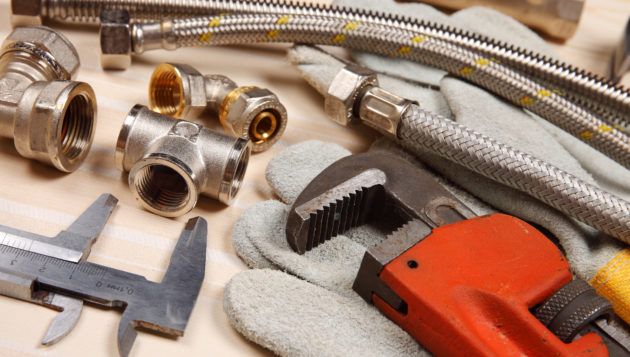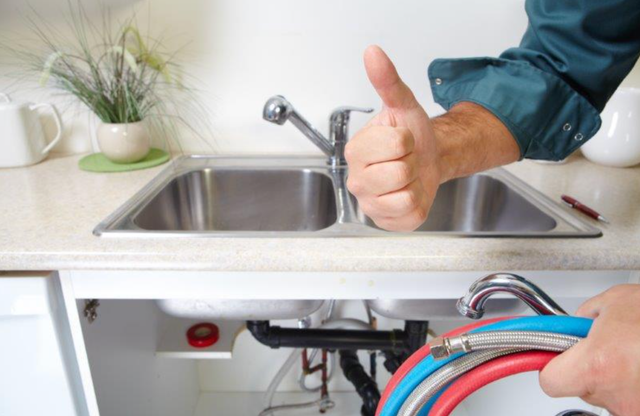Every person has got their own individual idea on the subject of Winterizing Your Pipes.

All house owners who live in temperate environments must do their ideal to winterize their pipelines. It is something you should do during fall prior to deep wintertime really begins. Failing to do so can lead to catastrophe like frozen, broken, or ruptured pipelines. Here are some helpful winterizing hacks to maintain your plumbing system shielded even if the climate outside is terrible.
Attempt a Hair Clothes Dryer or Warm Gun
When your pipelines are practically freezing, your trusty hair clothes dryer or warmth gun is a blessing. If the hot towels do not help dislodge any kind of resolving ice in your pipes, bowling warm air straight right into them may help. You may end up harmful your pipes while trying to melt the ice.
Open Cabinet Doors Hiding Plumbing
When it's chilly outside, it would certainly be valuable to open closet doors that are camouflaging your pipelines. Doing this tiny method can keep your pipelines warm and restrict the potentially harmful outcomes of freezing temperature levels.
Require Time to Wrap Exposed Pipes
One nifty as well as easy hack to heat up icy pipelines is to cover them with cozy towels. You can cover them initially with towels. After protecting them in position, you can pour boiling water on the towels. Do it gradually to allow the towels soak up the liquid. You can likewise make use of pre-soaked towels in hot water, just don't neglect to use safety gloves to safeguard your hands from the warm.
Activate the Faucets
When the temperature declines and also it appears as if the freezing temperature will certainly last, it will certainly aid to switch on your water both inside as well as outdoors. This will certainly maintain the water moving with your plumbing systems. In addition, the motion will slow down the cold process. Significantly, there's no demand to turn it on full force. You'll end up wasting gallons of water in this manner. Rather, go for regarding 5 drops per min.
When Pipes are Frozen, close Off Water
If you see that your pipelines are completely frozen or virtually nearing that stage, transform off the major water shutoff immediately. You will typically find this in your cellar or laundry room near the heating system or the front wall closest to the street. Transform it off immediately to stop additional damages.
Don't fail to remember to close outside water resources, as well, such as your hookup for the garden residence. Doing this will certainly protect against added water from filling out your plumbing system. With more water, more ice will certainly load up, which will eventually lead to burst pipes. It is best to call an expert plumber for an inspection if you are uncertain concerning the state of your pipes this wintertime. Taking this aggressive strategy can save you hundreds of dollars out of commission.
All house owners who live in warm climates must do their best to winterize their pipelines. Failing to do so can mean catastrophe like frozen, fractured, or ruptured pipes. If the hot towels do not aid remove any working out ice in your pipelines, bowling warm air directly right into them may aid. Turn off the main water shutoff promptly if you discover that your pipelines are totally icy or practically nearing that phase. With more water, even more ice will load up, which will ultimately lead to burst pipes.
PREVENT YOUR PIPES FROM FREEZING THIS WINTER
A Leading Cause of Property Damage
When the weather is taking a deep nose dive into the cold dreary days, the risk of your pipes freezing and potentially bursting skyrockets. Unfortunately, during these cold dreary months, burst pipes are the most common denominator for property damage. The pipes that are most at the risk are those that are in areas where it is most cold in your home. For instance, pipes located in interior places such as basements, attics, and your garage. Unfortunately, that doesn’t mean that the pipes running through your cabinets or exterior walls can’t freeze. Good news, however, is that you can do things to help prevent pipes from freezing.
How to Prevent Pipes From Freezing
Once the temperature starts to drop during the winter, you should be taking the proper measures needed to ensure that your pipes stay warm and that there is circulation of water through them. Some steps that experts may recommend could go against your better judgement when it comes to saving water and heat. However, it would go without saying that when expenses are compared, damaged pipes could put a bigger dent in your wallet than a water bill.
What Can I Do?
Keep your garage door closed. This is very important, especially if you have water supply lines running through your garage. Open your kitchen and bathroom cabinets to allow warm air to circulate through them. Allow air circulation throughout your home. Keeping the interior doors open will once again allow the warm air to circulate inside your home. Ensure your thermostat is running the same temperature throughout the night and day. If you plan to be away from home during the cold months, set your temperature no lower than 55° F. This should provide enough heat to keep the pipes warm and prevent any remaining water inside the pipes from freezing. For more of a long-term solution, add insulation to attics, basement, and other crawl spaces around your home. By allowing your faucet to drip, it will alleviate pressure in the system. This is important because the pressure that is created between the blockage and the faucet can potentially cause the pipes to burst. Allowing the faucet to drip will prevent the pressure from building up, therefore keeping the pipes from bursting. Seal any cracks, openings, and crawl spaces around your home to prevent cold air from coming inside. This keeps your pipes-not to mention your home-warmer and less susceptible to issues caused by freezing temperatures. For the pipes in your home that are easily accessible, applying electrical tape to them might prevent them from freezing over. This is a quick fix, as you can apply the tape directly to the pipe. There are two options for heating tapes. One turns on and off by itself when it senses heat is needed. The other type of heating tape needs to be applied when heat is needed and removed when not necessary. If you have exposed pipes in your home, you can check this website to take a look at a few options that would be available at a shop near you.

Do you enjoy reading up on Winterizing Your Pipes? Try leaving feedback further down. We would be pleased to find out your opinions about this posting. We are looking forward to see you back again before long. Are you aware of somebody else who is fascinated by the niche? Be sure share it. Thank you so much for taking the time to read it.
For fast relief, call!